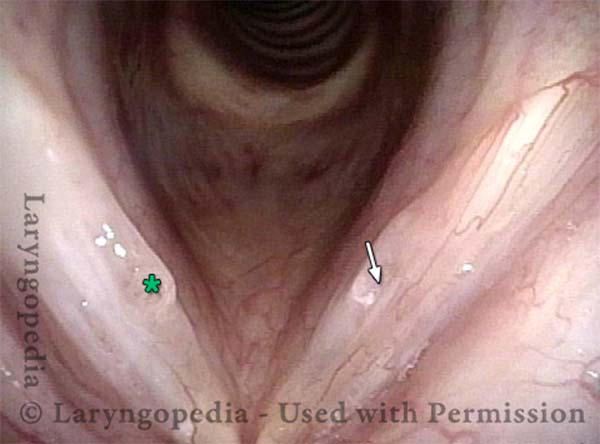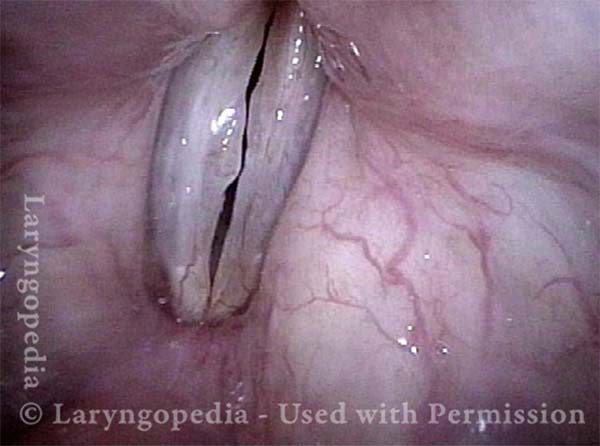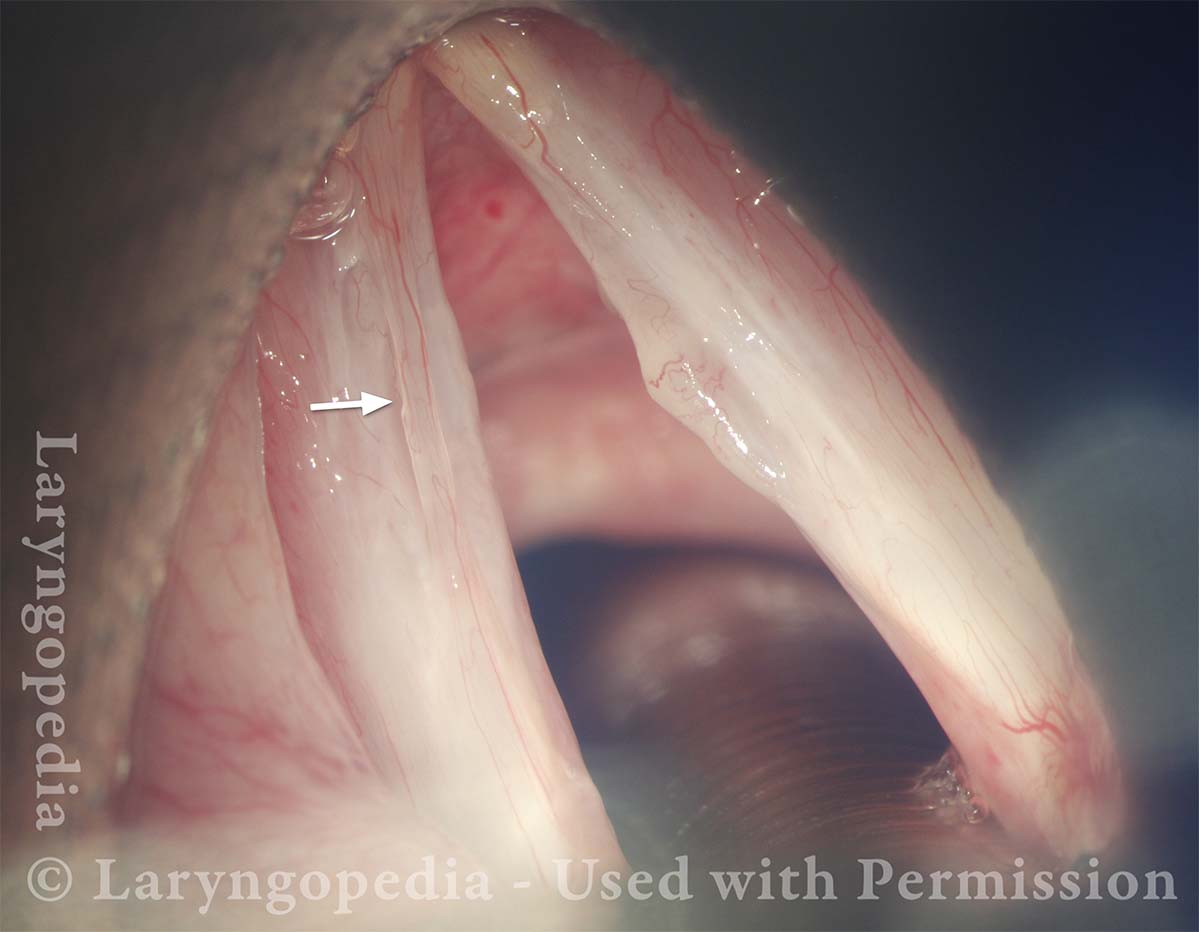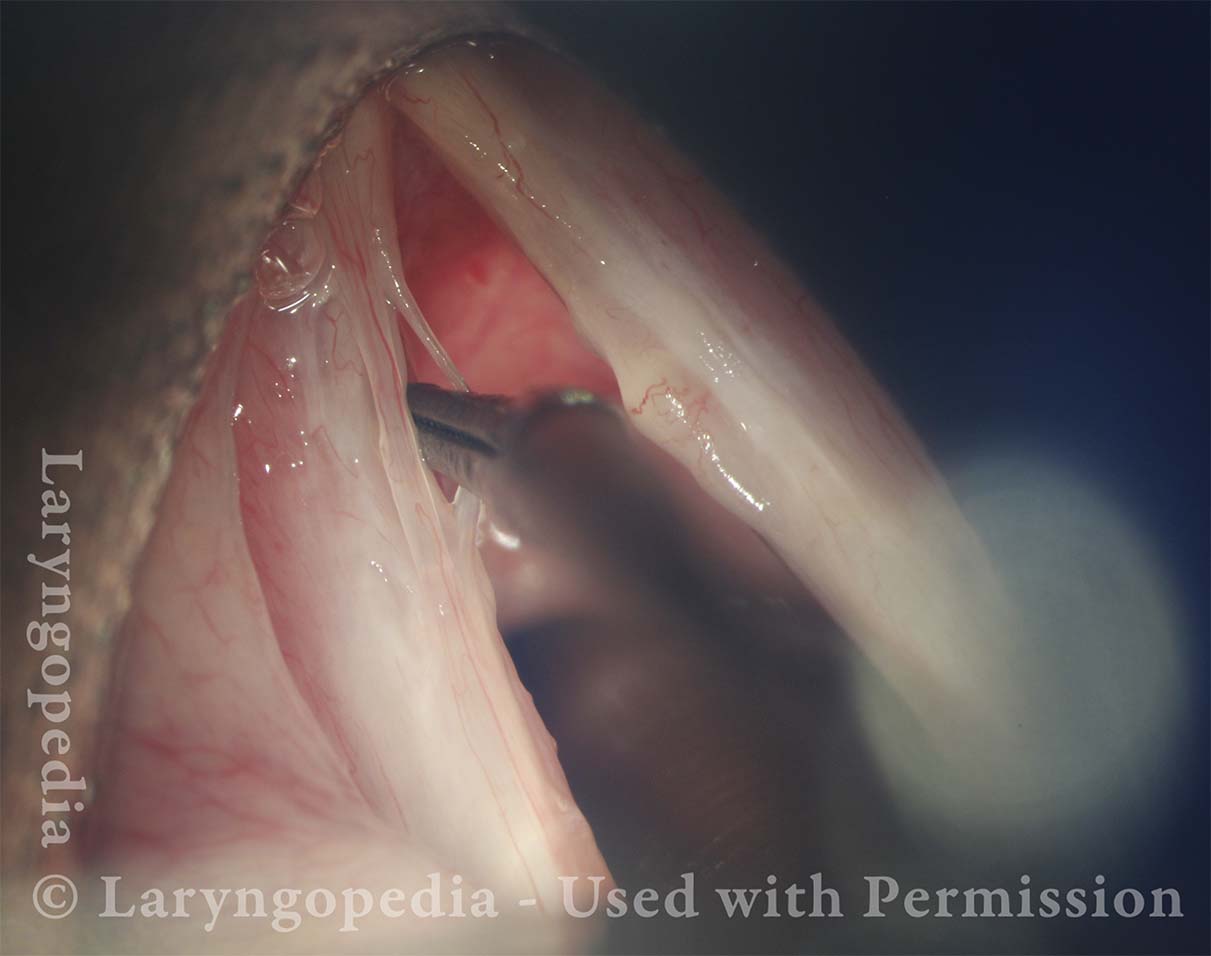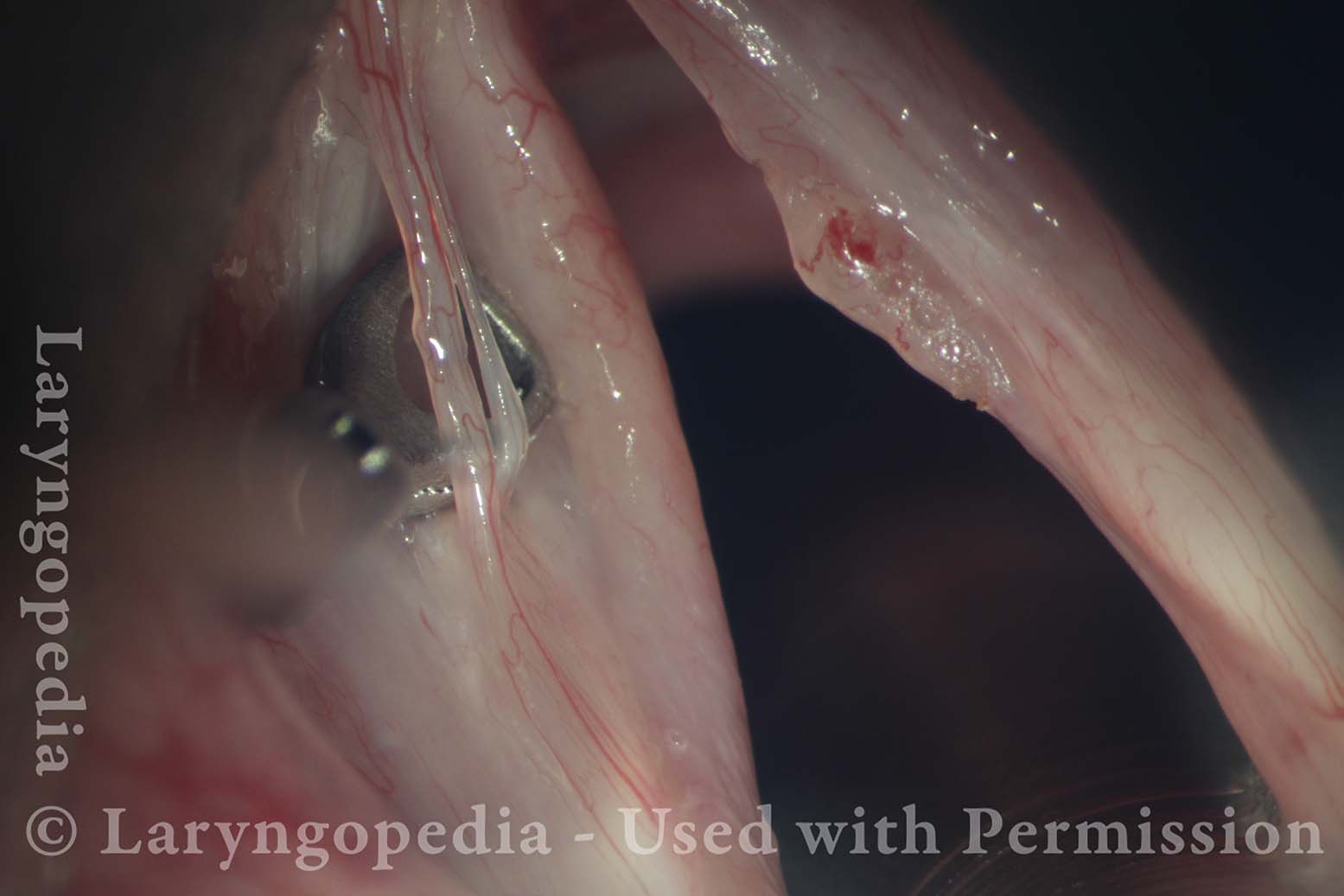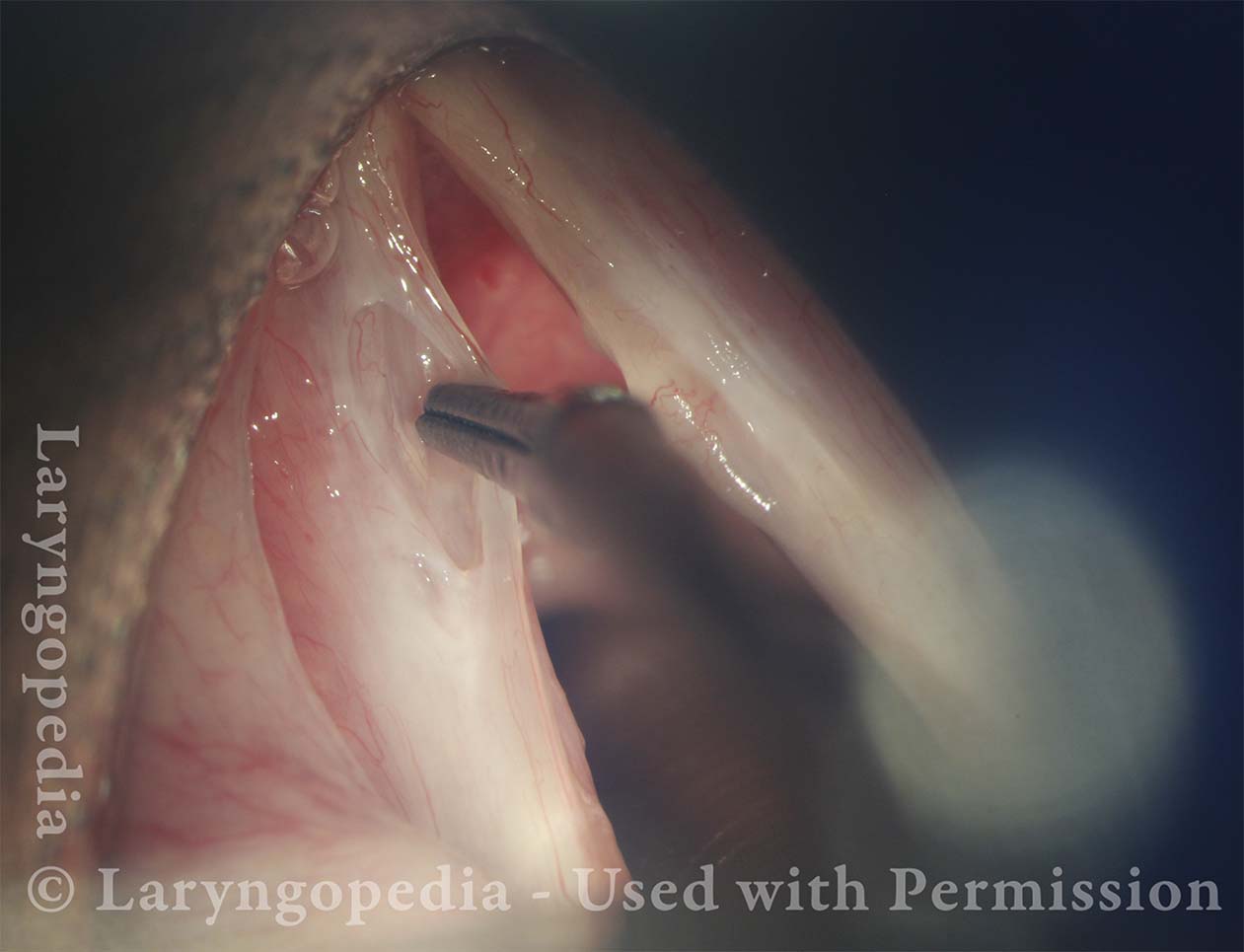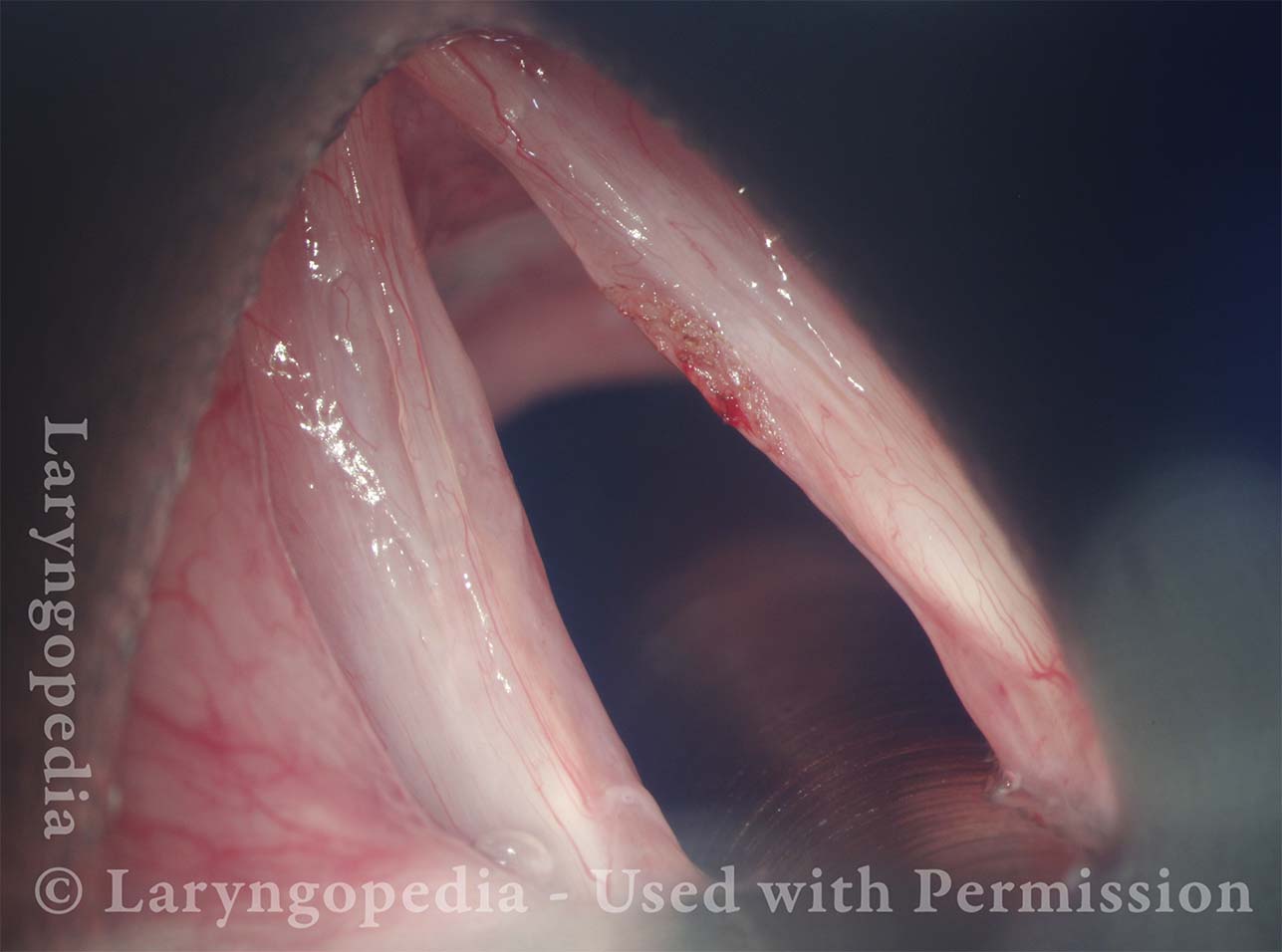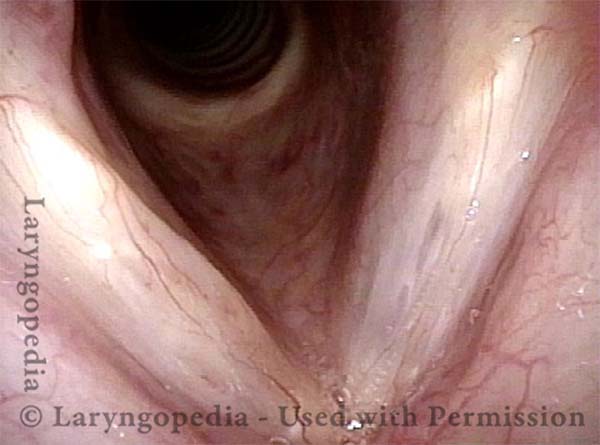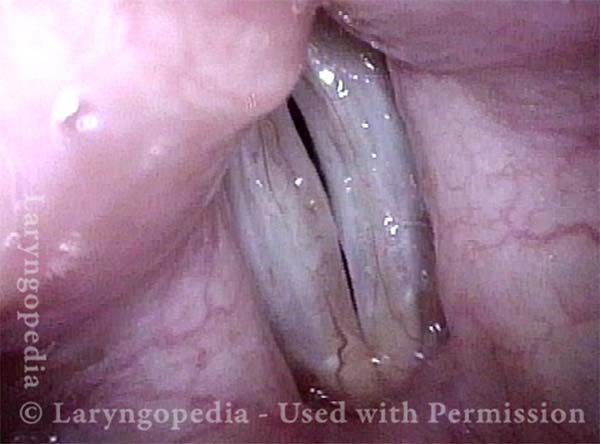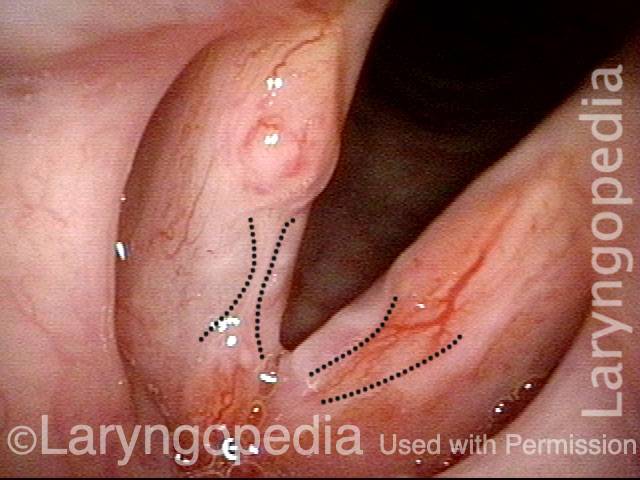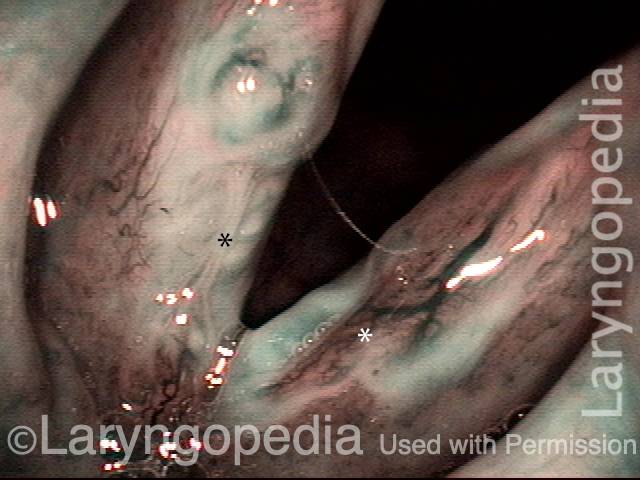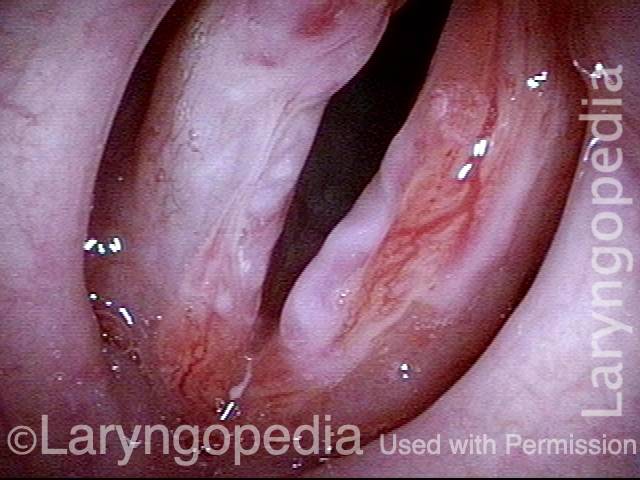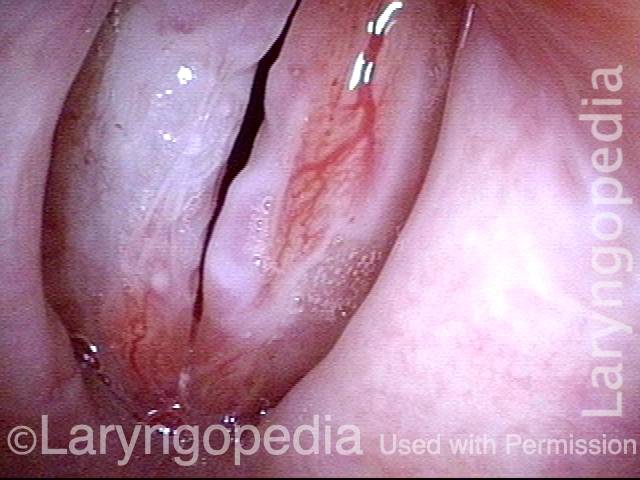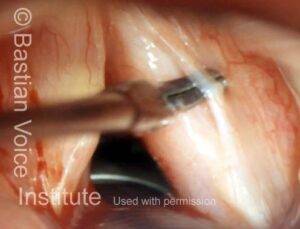
Mucosal Bridge
A mucosal bridge lies in the family of disorders such as epidermoid cyst and glottic sulcus. Imagine a cyst that opens in two places, spilling its contents completely. The result is a narrow bridge of mucosa, attached anteriorly and posteriorly.
 Not Just a Sulcus—Classic Mucosal Bridges
Not Just a Sulcus—Classic Mucosal Bridges
This 46-year-old woman is an intense, dynamic teacher with children still at home. She describes herself as highly sociable. In fact, on the 7-point talkativeness and loudness scales, she self-describes herself as a “7” and “6”—fitting a classic “vocal overdoer” profile.”
She has been chronically hoarse for several years. The examination showed what was initially expected to be a glottic sulcus. After becoming much more hoarse, she returned 3 years later, at which time a margin swelling was also found on the right vocal cord.
At the time of surgery, an extremely good example of not just one, but two mucosal bridges is found, overlying a deep sulcus. There is usually no benefit from removing a mucosal bridge, and so the surgery was limited to the polypoid lesion.
Postoperatively, even with the mucosal bridge untouched, she found her voice to be much improved.
Polypoid lesion + sulcus (1 of 9)
Polypoid lesion + sulcus (1 of 9)
Margin divot (2 of 9)
Margin divot (2 of 9)
Surgical view (3 of 9)
Surgical view (3 of 9)
Streching the mucosal bridge (4 of 9)
Streching the mucosal bridge (4 of 9)
Lifting the mucosal bridge (5 of 9)
Lifting the mucosal bridge (5 of 9)
Sulcus beneath mucosal bridges (6 of 9)
Sulcus beneath mucosal bridges (6 of 9)
Polyp removed (7 of 9)
Polyp removed (7 of 9)
Postoperative view (8 of 9)
Postoperative view (8 of 9)
Voice restored (9 of 9)
Voice restored (9 of 9)
Mucosal Bridges from Severe Vocal Overuse
Vibratory injury (1 of 4)
Vibratory injury (1 of 4)
Non-mucosalized granulation tissue (2 of 4)
Non-mucosalized granulation tissue (2 of 4)
Open phase of vibration (3 of 4)
Open phase of vibration (3 of 4)
Closed phase (4 of 4)
Closed phase (4 of 4)
Share this article
